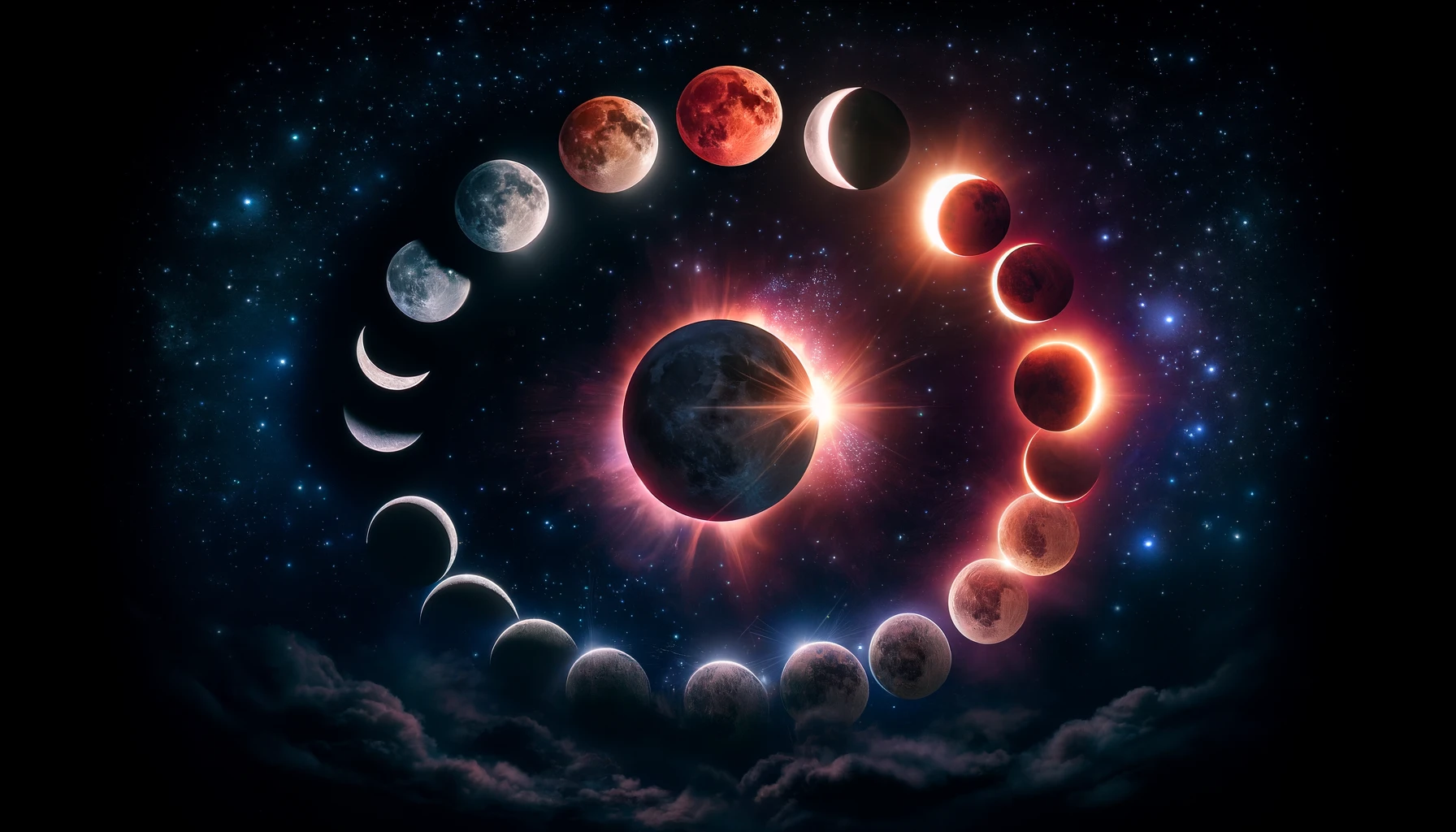
The celestial ballet that graces our skies never ceases to amaze, and eclipses are perhaps its most dramatic and eagerly awaited performances. In 2024, the astronomical calendar is brimming with such spectacles, promising a feast for the eyes of skywatchers worldwide. As we wrap up an eventful year of celestial phenomena, it’s thrilling to look forward to what the cosmos has in store for us next.
Eclipses, both solar and lunar, hold a special place in the hearts of astronomy enthusiasts and casual observers alike. These events, caused by the interplay of the Earth, Moon, and Sun, offer not just a visual treat but also a chance for scientific study and cultural reflection. In 2023, we were fortunate to witness several such events, each unique in its own right and observed by millions across the globe. From the shadowy depths of total lunar eclipses to the awe-inspiring moments of totality in solar eclipses, these celestial occurrences prompted celebrations, gatherings, and introspective moments worldwide.
As we bid farewell to the past year’s celestial wonders, we turn our gaze forward with anticipation. The year 2024 promises to be equally, if not more, spectacular in terms of astronomical events. Among the highlights are several eclipses that will captivate audiences around the world.
One of the most awaited events is the total solar eclipse. This breathtaking phenomenon, where the Moon completely covers the Sun, leaving only its ethereal corona visible, is a rare opportunity for those situated along its path of totality. Observers within this narrow band will experience daytime darkness, a dramatic drop in temperature, and a profound sense of awe. This eclipse not only offers a visual spectacle but also presents an invaluable opportunity for scientific research, allowing scientists to study the Sun’s elusive corona and its effects on our planet’s atmosphere.
In addition to the total solar eclipse, we will also be treated to partial and annular solar eclipses. These occur when the Moon only partially covers the Sun or when it is too far from Earth to completely cover the Sun, creating a “ring of fire” effect. Though not as dramatic as a total eclipse, these events still offer a unique spectacle and an opportunity to observe the dynamics of our celestial neighbors.
Lunar eclipses will also grace our skies, offering a different kind of spectacle. During a lunar eclipse, the Earth positions itself between the Sun and the Moon, casting its shadow on the latter. Depending on the alignment, we may witness a total lunar eclipse, where the Moon is completely engulfed in Earth’s shadow, or a partial one, where only a section of the Moon is darkened. These events are not only beautiful to watch but also accessible, as they can be seen from anywhere on Earth where the Moon is above the horizon.
As we look forward to these celestial events in 2024, it’s a reminder of the ever-changing, dynamic universe we inhabit. Eclipses serve as a bridge between the past and the future, connecting us through time with observers who have watched these same phenomena for millennia. They remind us of the wonders of the cosmos and our place within it, offering moments of reflection, discovery, and unity. As we prepare our telescopes and eclipse glasses, let’s look forward to another year of celestial celebrations and the countless mysteries the universe has yet to unveil.